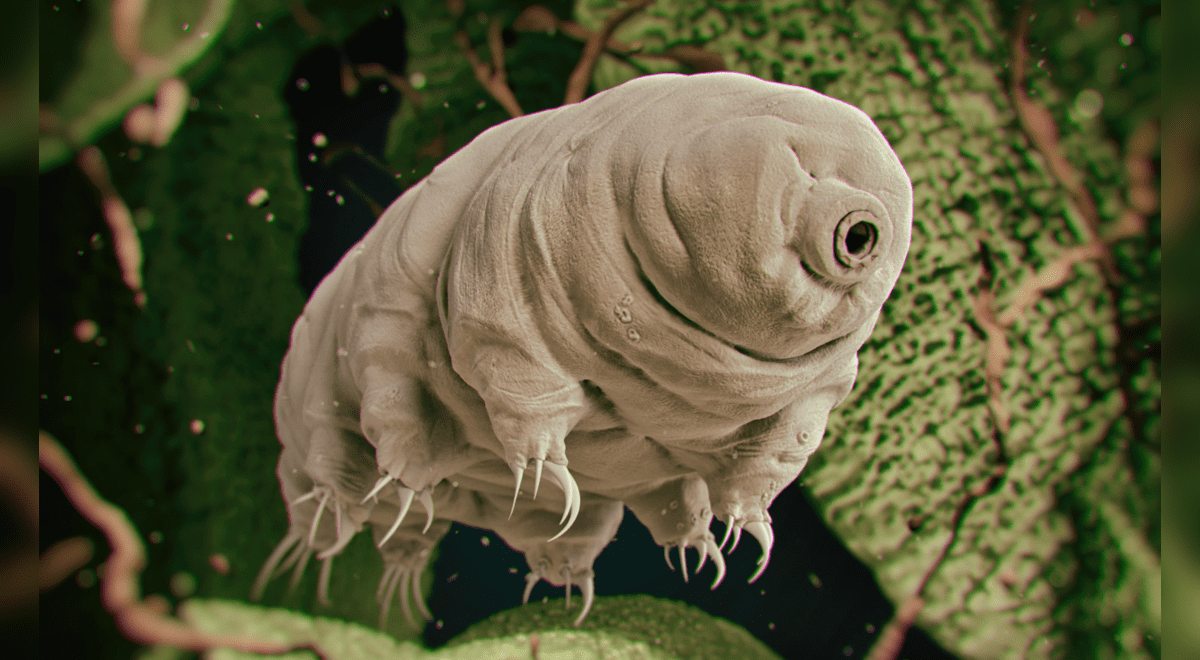Chinese military scientists claim to have made radiation-resistant cells from the DNA of tardigrades. Image: SCMP
A revolutionary scientific breakthrough may occur in China, where military scientists claim to have rendered human cells invulnerable to radiation by inserting a master gene. Tardigradesmicroscopic creatures that are considered the toughest living organisms on earth.
And the team of experts asserts that the experiment could lead in the future to the development of “super soldiers” capable of resisting radiological attacks during a hypothetical nuclear war, the newspaper reported on March 29. South China Morning Post (SCMP).
According to the Hong Kong portal, The original research was published in October in the Asian Journal of Military Medical Sciences From then on he would cause controversy in the scientific community because of the ethical debates he brings with him.
Micrograph of a tardigrade. Photo: Hiroki Higashiyama/Hazuharu Arakawa/WIRED
Introducing tardigrade DNA into human cells
Tardigrades, also known as water bearsare animals about one millimeter in size that are very interesting because of their amazing resistance: they live in harsh environments and withstand greater pressures than those of the deepest oceans.
but this is not all. Although it may surprise you, These microscopic aquatic invertebrates can live in space, too Because she carries a special gene that is able to generate a protein that, like a shield, protects her from x-rays.
Attracted by that “great power”, Yu Wena biotechnologist from the Academy of Military Sciences in Beijing, along with his team, began an experiment to see if this ability could be transferred to human cells grown in the laboratory.
The experiment involved adding the tardigrade gene using CRISPR/Cas9 gene-editing technology to human embryonic stem cells, a type of cell from early embryos that can become any other gene in the body.
Although scientists initially recognized that transferring genes between species could “raise some safety concerns,” They were surprised that the experiment did not damage or cause mutations in human cells.
On the contrary, they functioned normally and even promoted cell proliferation to some extent, the Chinese paper reported.
Radiation-resistant “superhumans”?
According to the Hong Kong portal, after exposing human embryonic cells carrying the gene to a lethal dose of X-rays, Chinese scientists discovered that Almost 90% of them survived the radiation.
After the successful experiment, Yue Wen and his team want to take the next step: convert the modified embryonic stem cells into hematopoietic cells and then propagate them into the bone marrow. And the SCMP reported that in this way, humans can suffer from various other diseases.
“This gene plays a protective role in cellular DNA against oxidative stress, which is critical to the development of many diseases, including cancer, aging, diabetes, infections and Parkinson’s disease,” they wrote.
“Acute radiation sickness (ARS) is a medical problem faced by military personnel, civilians, and emergency workers when responding to nuclear accidents and nuclear terrorism,” the researchers said.
Although the idea of \u200b\u200bthe Chinese to create “ultra-radioactive” may seem very far in time, many scientists in the world confirm this. More research into the genetics of this animal could help cancer patients in the near future To better resist radiotherapy or create more effective sunscreens.
Tardigrades have the ability to survive in extreme environments, which is why they can also survive in space. Photo: UC Santa Barbara
What other animals are known to be resistant to harsh conditions?
They are called other small invertebrates and aquatic animals bdeloid rotorsand has been shown to not only survive lethal exposure to X-rays and gamma rays, but also reproduce beyond those doses.
In a study of Harvard scientists, scientists from Harvard explain: “They are able to recover and resume normal reproduction after receiving a dose of radiation that destroys their genomes, causing hundreds of double-stranded pieces of DNA which, however, are able to repair it. Proceedings of the National Academy of Sciences.

“Beeraholic. Friend of animals everywhere. Evil web scholar. Zombie maven.”

:quality(85)/cloudfront-us-east-1.images.arcpublishing.com/infobae/3FK4NB2IUBDNLGMO42HMXAA4JY.jpg)
:quality(75)/cloudfront-us-east-1.images.arcpublishing.com/elcomercio/Y5SIZUFLEBBRFC6B5SA4DT4R6I.jpg)




More Stories
Tell me what you look at first in the chart and I’ll reveal your deepest fears Mexico
They are able to dive into the water without having to breathe
How NASA regained contact with Voyager 1, the spacecraft that has traveled further than any other